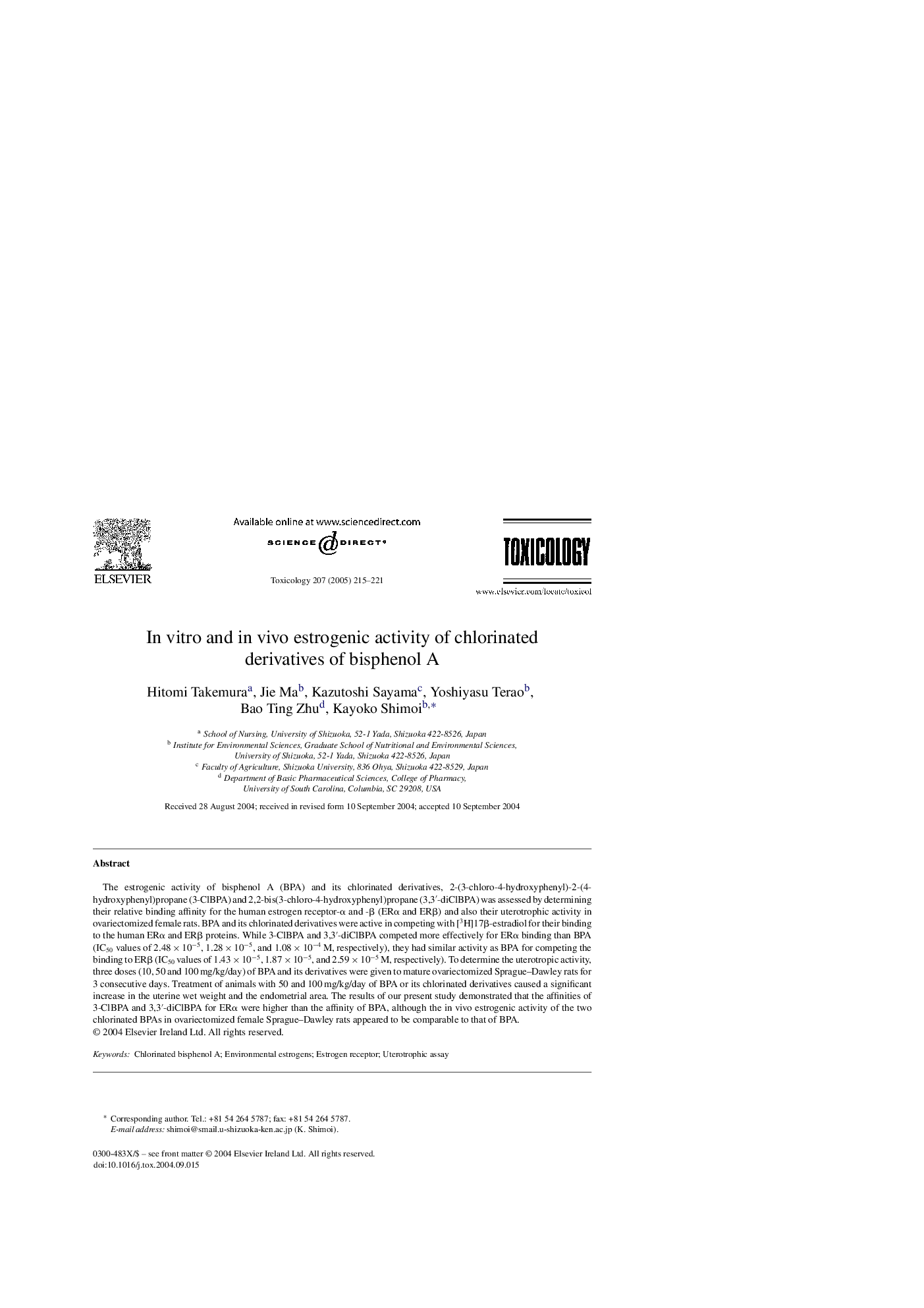| Article ID | Journal | Published Year | Pages | File Type |
|---|---|---|---|---|
| 9034743 | Toxicology | 2005 | 7 Pages |
Abstract
The estrogenic activity of bisphenol A (BPA) and its chlorinated derivatives, 2-(3-chloro-4-hydroxyphenyl)-2-(4-hydroxyphenyl)propane (3-ClBPA) and 2,2-bis(3-chloro-4-hydroxyphenyl)propane (3,3â²-diClBPA) was assessed by determining their relative binding affinity for the human estrogen receptor-α and -β (ERα and ERβ) and also their uterotrophic activity in ovariectomized female rats. BPA and its chlorinated derivatives were active in competing with [3H]17β-estradiol for their binding to the human ERα and ERβ proteins. While 3-ClBPA and 3,3â²-diClBPA competed more effectively for ERα binding than BPA (IC50 values of 2.48 Ã 10â5, 1.28 Ã 10â5, and 1.08 Ã 10â4 M, respectively), they had similar activity as BPA for competing the binding to ERβ (IC50 values of 1.43 Ã 10â5, 1.87 Ã 10â5, and 2.59 Ã 10â5 M, respectively). To determine the uterotropic activity, three doses (10, 50 and 100 mg/kg/day) of BPA and its derivatives were given to mature ovariectomized Sprague-Dawley rats for 3 consecutive days. Treatment of animals with 50 and 100 mg/kg/day of BPA or its chlorinated derivatives caused a significant increase in the uterine wet weight and the endometrial area. The results of our present study demonstrated that the affinities of 3-ClBPA and 3,3â²-diClBPA for ERα were higher than the affinity of BPA, although the in vivo estrogenic activity of the two chlorinated BPAs in ovariectomized female Sprague-Dawley rats appeared to be comparable to that of BPA.
Related Topics
Life Sciences
Environmental Science
Health, Toxicology and Mutagenesis
Authors
Hitomi Takemura, Jie Ma, Kazutoshi Sayama, Yoshiyasu Terao, Bao Ting Zhu, Kayoko Shimoi,
